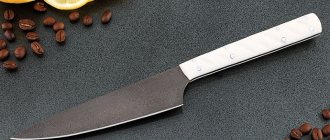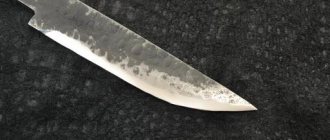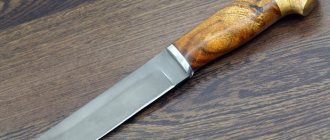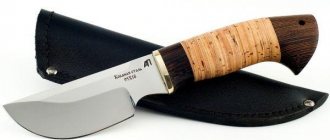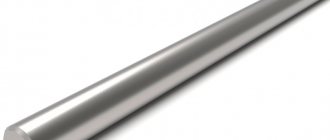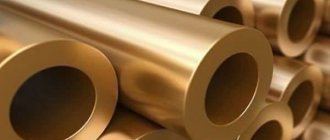Description
U12 steel is used : for the manufacture of hand taps, files, metal scrapers; parts of cold stamping dies of cut and die cut small sizes and without cross-sectional transitions; cold heading punches and small dies; calibers of simple shape and lower accuracy classes; tools with reduced wear resistance at moderate and significant specific pressures (without heating the cutting edge): files, razor blades and knives, sharp surgical instruments, scrapers, engraving tools.
U12 steel for knives: pros and cons. X12MF steel for knives: pros and cons
Let us say right away that there is no ideal steel that would meet all desires. You always have to look for some “golden mean” in order to select a metal composition that would be ideal for specific purposes. A simple example is that if a knife is made of “soft” steel, then it is easy to sharpen. But on the other hand, such blades will dull much faster. Household knives that we use every day in the kitchen are often made from this type of steel.
Another example is that products made from “hard” steel last much longer. But they also have their drawbacks - when they hit a hard object, chips can form. And in general, there is a golden rule for making knives: the more complex the steel composition, the more different impurities used in production, the more expensive the final price will be. A striking example is blades made of Damascus steel. They are close in their properties to the standard, but their cost is an order of magnitude higher. And you definitely won’t use such knives in the kitchen.
In addition to the steel grade itself, the heat treatment process is of great importance. It is at this stage of production that a mistake can be made, which will subsequently negatively affect the product itself. It can rust quickly, be too soft, become dull quickly, or even break down. But this is not all about “Zlatoust knives”. Our product is of high quality. And any blade that bears our mark meets the most advanced world standards.
Now we’ll tell you in more detail what grades of steel our knives are made from. We will also tell you in detail how this or that chemical composition differs, and what its main advantages are.
Steel grades:
65G-H12MF1
One of the best examples of steel in existence. Its main advantage is that it cuts perfectly, does not dull for a long time and can even withstand serious shock loads. This steel is easy to care for - just polish, sharpen, and does not require any special storage conditions. But you need to carefully monitor the environment in which the blade will be kept. It is recommended to avoid alkaline and acidic environments. Otherwise, the knife will very quickly begin to lose its properties and appearance. For example, with short-term exposure to negative factors, dark spots will begin to appear on the metal. And constant maintenance in an alkaline environment will lead to rust.
U10A-7HNM
This steel and others like it (marked “U7” and “U8”) are classified as high-hardness metals. Such materials are often used to make various tools, such as files. It is these that are most often then forged into blades. In this case, original knives are obtained, on which specific notches are preserved, they turn into an original decorative element. Knives made from this steel cut well and stay sharp for a long time. But they have their own drawback - too weak resistance to corrosion. Without constant treatment, such blades quickly begin to lose their original appearance - the steel darkens, and then rust may appear.
40Х13-Х12Ф1
This is one of the most popular steel grades. Used in almost all areas. Such knives can be found in the kitchen of a good housewife; they are sold in souvenir shops. They are also used by fishermen, divers and divers. And this is where their main advantage becomes clear - high resistance to corrosion. They do not deteriorate even with prolonged exposure to moisture. And they last for a very long time. Steel also cuts well and does not require any special care. But there are also certain disadvantages. For example, this metal is practically impossible to harden. And besides, it is “soft” steel, that is, it is easy to sharpen, but the knives quickly become dull. So you will have to constantly monitor the quality of the blade.
Standards
| Name | Code | Standards |
| Sheets and strips | B23 | GOST 103-2006 |
| Long and shaped rolled products | B22 | GOST 1133-71, GOST 2590-2006, GOST 2591-2006, GOST 2879-2006 |
| Long and shaped rolled products | B32 | GOST 1435-99, GOST 5210-95, GOST 7417-75, GOST 8559-75, GOST 8560-78, GOST 14955-77, TU 14-11-245-88, TU 14-1-1271-75 |
| Sheets and strips | B33 | GOST 4405-75 |
| Medium and high carbon steel wire | B72 | GOST 5468-88, GOST 9389-75 |
Chemical composition
| Standard | C | S | P | Mn | Cr | Si | Ni | Fe | Cu |
| GOST 1435-99 | 1.1-1.29 | ≤0.028 | ≤0.03 | 0.17-0.33 | ≤0.2 | 0.17-0.33 | ≤0.25 | Remainder | ≤0.25 |
Fe is the basis. According to GOST 1435-99, the mass fraction of chromium, nickel and copper is indicated for group 1 of metal products. The mass fraction of sulfur in steel produced by electroslag remelting should not exceed 0.013%. In metal products of the 3rd group, the mass fraction of Cr ≤ 0.20-0.40%, Ni ≤ 0.25%, Cu ≤0.25%. In metal products of the 1st and 3rd groups, made from steel obtained by the scrap process, the mass fractions of nickel, copper and chromium increased by 0.05% of each element compared to those indicated in the table are allowed. In metal intended for the production of cold-rolled strip, an increase in the mass fraction of nickel, copper and chromium is not allowed.
Mechanical characteristics
| Section, mm | holiday t, °C | sТ|s0.2, MPa | σB, MPa | d5, % | d4 | y, % | kJ/m2, kJ/m2 | H.R.C. |
| Annealed cold-rolled strip of the highest quality category |
| 0.08-3 | — | — | ≤750 | — | ≥10 | — | — | — |
| Samples with a cross section of 21-30 mm. Quenching in water from 810-830 °C + Tempering |
| — | 400 | ≥1370 | ≥1570 | ≥9 | — | ≥24 | ≥200 | ≥52 |
| A sample with a diameter of 5 mm and a length of 25 mm, deformed and annealed. Deformation speed 10 mm/min. Strain rate 0.007 1/s |
| — | — | — | ≥105 | ≥60 | — | ≥68 | — | — |
| Samples with a cross section of 21-30 mm. Quenching in water from 810-830 °C + Tempering |
| — | 500 | ≥880 | ≥1040 | ≥11 | — | ≥30 | ≥290 | ≥40 |
| Long products. Annealing |
| — | — | ≥325 | 590-690 | ≥28 | — | ≥50 | ≥270 | — |
| A sample with a diameter of 5 mm and a length of 25 mm, deformed and annealed. Deformation speed 10 mm/min. Strain rate 0.007 1/s |
| — | — | — | ≥100 | ≥52 | — | ≥96 | — | — |
| Samples with a cross section of 21-30 mm. Quenching in water from 810-830 °C + Tempering |
| — | 600 | ≥650 | ≥760 | ≥18 | — | ≥52 | ≥440 | ≥26 |
| A sample with a diameter of 5 mm and a length of 25 mm, deformed and annealed. Deformation speed 10 mm/min. Strain rate 0.007 1/s |
| — | — | — | ≥60 | ≥40 | — | ≥100 | — | — |
| — | — | — | ≥34 | ≥65 | — | ≥100 | — | — |
| — | — | — | ≥18 | ≥74 | — | ≥100 | — | — |
| — | — | — | ≥15 | ≥92 | — | ≥100 | — | — |
| Long products. Annealing (at 20 °C НВ=207) |
| — | — | ≥325 | 590-690 | ≥28 | — | 45-55 | — | — |
| — | — | ≥320 | ≥570 | ≥23 | — | ≥47 | — | — |
| — | — | ≥310 | ≥450 | ≥41 | — | ≥60 | — | — |
| — | — | ≥110 | ≥140 | ≥56 | — | ≥74 | — | — |
| — | — | ≥59 | ≥76 | ≥56 | — | ≥82 | — | — |
| — | — | ≥53 | ≥72 | ≥59 | — | ≥85 | — | — |
| — | — | ≥34 | ≥40 | ≥52 | — | ≥91 | — | — |
| — | — | ≥20 | ≥28 | ≥55 | — | ≥98 | — | — |
Steel U12, U12A carbon tool
Decoding
- According to GOST 1435-99, the letter U in the designation of the steel grade means that the steel is carbon.
- The number 12 following the letter Y indicates the average mass fraction of carbon in tenths of a percent, i.e. The average carbon content in steel 12 is about 1.2%
- The presence of the letter A at the end of the marking means that the steel is high quality, i.e. with increased requirements for the chemical composition.
Substitute
Steels U10A, U11A, U10, U11.
Foreign analogues [1]
| steel grade | Standard |
| N12 (Poland) | PN/H 85020 |
| N 12 E (Poland) | PN/H 85020 |
| S122 (Hungary) | MSZ 4354 |
| U12 (Bulgaria) | BDS 6751 |
| I 12 A (Bulgaria) | BDS 6751 (83) |
| SK2 (Japan) | JIS G4401 (83) |
| 19221 (Czech Republic/Slovakia) | CSN 419221 |
| BW1C (UK) | BS 4659 (89) |
| C120 KU (Italy) | UNI 2955-82 Part 2 |
| C 120E3U (France) | AFNOR NF NF A 35-590 (92) |
| C 120 (Spain) | UNE 36071 (75) |
Type of delivery
- Long products, including shaped steel: GOST 1435-90, GOST 2590-88, GOST 2591-88, GOST 2879-88.
- Calibrated rod GOST 1435-90, GOST 7417-75, GOST 8559-75, GOST 8560-78.
- Polished rod and silver steel GOST 1435-90, GOST 14955-77. Tape GOST 2283-79, GOST 21997-76.
- Strip GOST 4405-75, GOST 103-76.
- Forgings and forged blanks GOST 1435-90, GOST 4405-75, GOST 1133-71.
Characteristics and Application
Tool steel U12 (U12A) belongs to the group of steels with reduced hardenability. Steels of this group must be hardened in water, and tools made of this steel, as a rule, have an unhardened core. Quenching in water requires measures to be taken against severe warping, i.e. When designing a tool, sharp corners and sharp transitions of sections should be avoided [2].
Experience shows that the hardenability of steel U12 and U12A is very variable. Individual melts of the same brand can be calcined to different depths [3].
When choosing this grade of steel, you should keep in mind that the higher the hardness (for example, more carbon, lower tempering), the higher the wear resistance, but the lower the strength. Therefore, if the operation of the tool is not accompanied by shock loads, the blade edge has a sufficient cross-section - it is desirable to have a high hardness (62 HRC and above) and, therefore, high-carbon steel U12 should be used and a low tempering should be given (150-200 ° C), otherwise steels with lower carbon content are used, for example U7-U8, after tempering at 250-300 °C and ˂60 HRC [3]xxxxxxxxx.
U12 steel is used for the manufacture of tools with maximum wear resistance and the highest hardness, for example:
- incisors,
- various metal-cutting and measuring tools,
- files,
- chisels for cutting files,
- engraving tool,
- drawing boards, etc.
Cutting tools operating in conditions that do not cause heating of the cutting edge:
- hand taps,
- small-sized machine taps,
- dies for grains,
- small-sized reamers,
- needle files,
- measuring instrument of simple form: smooth gauges, staples,
- stands for cold grinding of edged and notched small sizes and without cross-sectional transitions,
- cold heading dies and small sized stamps,
- calibers of simple shape and lower accuracy classes.
Chemical composition, % (GOST 1435-99)
| steel grade | Mass fraction of element, % |
| carbon | silicon | manganese | sulfur | phosphorus |
| no more |
| U12 | 1,10-1,29 | 0,17-0,33 | 0,17-0,33 | 0,028 | 0,030 |
| U12A | 1,10-1,29 | 0,17-0,33 | 0,17-0,28 | 0,018 | 0,025 |
Phase composition, % by mass
| Ferrite | Carbides | Carbide type |
| 81-83,5 | 18,5-17 | Fe3C |
Temperature of critical points, °C [2]
Hardening [3]
The hardening temperature of hypereutectoid steel U12A lies in the range between Ac3 and Ac1. The structure of steel in the hardened state consists of martensite and excess (secondary) carbides. The optimal hardening temperature is 790 °C.
In hardened steel, the tetragonality of martensite and internal stresses create significant brittleness, so tempering after hardening is a mandatory operation. [3]
Recommended hardening modes [4]
| Option | Temperature, °C | Cooling | Cooling down to 20°C | H.R.C. | Structure or score of martensite on scale No. 3 GOST 8233-56 |
| Wednesday | Temperature, °C | Excerpt |
| I | 770-790 | Water | 20-40 | Up to 200-250 °C | In oil | 62-64 | 1 |
| II | 5% aqueous solution of table salt | 62-65 |
| III | 5-10% aqueous alkali solution | 62 — 64 |
| IV | 790 — 810 | Industrial oil 12 | Up to 20 - 40 °C | — | 62-64 | 1-3 For products with a diameter or thickness of less than 6-8 mm |
| 40 — 50 | Sorbitol-troostite Depending on the diameter or thickness of the product |
| V | 790-810 | Melt of saltpeter, alkali | 150 — 180 | Exposure in the melt is equal to exposure during heating for quenching | On air | 62-64 | 1-3 For products with a diameter or thickness of less than 6-8 mm |
| VI | The melt temperature and duration of isothermal exposure are selected according to the diagram in Fig. 1, depending on the required hardness. Cooling to 20 °C in air | Sorbitol-troostite |
NOTES:
- It is recommended to calculate the duration of exposure during heating for hardening according to the All-Russian Scientific Research Institute method [5].
- Option III is used to prevent the formation of soft spots during hardening.
- When adding 4 - 6% water to the alkali melt, option V is used for products with diameters or thicknesses up to 10-12 mm.
Cold treatment [4]
| Hardening option | Cooling temperature, °C | Purpose | Hardness increase ΔHRC |
| IV | -50 | Dimensional stabilization of high precision tools | 1-2 |
NOTE. Cold treatment should be carried out no later than 1 hour after hardening.
Recommended holiday modes [4]
| Option | Vacation appointment | Heating temperature, °C | Heating medium | H.R.C. |
| I | Relieving stress, stabilizing structure and dimensions | 140-160 | Oil, molten saltpeter, alkali | 62-64 |
| 160-180 | 61-63 |
| 180-200 | 60 — 62 |
| 200-250 | 56-61 |
| II | Relieving stress and reducing hardness | See note 2 | Melt saltpeter, alkali, air atmosphere furnace | — |
NOTE:
- High precision products (1-2 microns) after preliminary grinding are subjected to repeated tempering (aging).
- The tempering mode to obtain a hardness below HRC 56 is selected according to a schedule in accordance with the required hardness.
- Tempering at temperatures above 250 C ensures stabilization of product dimensions.
- For heating rates and holding time during tempering, see table. 3 Applications.
Tempering temperature of various tools made of U12 steel [3]
| Types of tools | Steel | Temperature, °C | Acceptance hardness of the working part HRC |
| Taps | U12 | 180-200 | 60-62 |
| Sweeps | U12 | 160-180 | 62-64 |
Hardness of carbon steel U12 after tempering [7]
| steel grade | Akalka mode | Hardness after quenching HRC | Hardness HRC after tempering at temperature in °C |
| temperature in °C | cooling medium | 200 | 300 | 400 | 500 | 600 |
| U12 | 770-790 | Through water to oil | 62-64 | 61-63 | 54-58 | 48-52 | — | — |
Approximate heat treatment temperature and hardness of U10 steel in the annealed state [6]
| Annealing temperature °C | Hardness after annealing HB (no more) | Quenching temperature °C |
| 760-780 °C | 207 | 760-790 °C |
Technological process of isothermal annealing of steel U12, U12A [6]
| steel grade | First heating | Isothermal holding | Hardness HB |
| Temperature, °C | Exposure per hour | Temperature, °C | Exposure per hour |
| U12, U12A | 750-770 | 1,5-2,5 | 640-680 | 1-2 | 187-207 |
Recrystallization annealing temperature of steel [7]
| Pressure treatment followed by annealing | steel grade | Annealing temperature in °C |
| Cold drawing (calibration) of bars | U12 | 700 |
Approximate annealing modes for tool steels U12, U12A to improve machinability during cutting [7]
| Heating temperature in °C | Cooling | Indentation diameter according to Brinell in mm |
| 760-780 | With an oven at 50° per hour to a temperature of 500°C, and then in air | ≥4,2 |
NOTE. To improve the machinability of tool steels, high tempering at a temperature of 650-680 °C is also used.
Hardness [4]
| Without °Cannealing | After °C annealing | After °C hardening |
| dotp, mm | NV | dotp, mm | NV | Quenching temperature °C, °C, °C and cooling medium | H.R.C. |
| 3,7-3,3 | 269-341 | ≥4,2 | ≤207 | 760-780, water | ≥62 |
Mechanical properties depending on tempering temperature [8]
| tref., °C | σ0.2, MPa | σв, MPa | δ5, % | ψ, % | KSU, J/cm2 | Hardness HRCе |
| 400 | 1370 | 1570 | 9 | 24 | 20 | 52 |
| 500 | 880 | 1040 | 11 | 30 | 29 | 40 |
| 600 | 650 | 760 | 18 | 52 | 44 | 26 |
NOTE. Samples size 32x32x42 mm. Hardening from 760-790 °C.
Steel hardness depending on tempering temperature [8]
| tref., °C | Hardness HRCе |
| 160-180 | 62-64 |
| 180-220 | 59-63 |
| 200-270 | 55-61 |
| 450-500 | 37-47 |
NOTE. Samples with a cross section of 21-30 mm. Quenching from 810-830 °C in water.
Mechanical properties depending on test temperature
| tsp., °C | σ0.2, MPa | σв, MPa | δ5, % | ψ, % | KSU, J/cm2 |
| Annealing at 20 °C; hardness HB 207 [4, 9] |
| 20 | 325 | 590-690 | 28 | 45-55 | 27 |
| 200 | — | 570 | 23 | 47 | 73 |
| 400 | 310 | 450 | 41 | 60 | 69 |
| 600 | 110 | 140 | 56 | 74 | 62 |
| 700 | 59 | 76 | 56 | 82 | 356 |
| 800 | 53 | 72 | 59 | 85 | 323 |
| 900 | 34 | 40 | 52 | 91 | 225 |
| 1000 | 20 | 28 | 55 | 98 | 157 |
| A sample with a diameter of 5 mm and a length of 25 mm, °C, deformed and annealed. Deformation speed 10 mm/min; °C strain rate 0.007 1/s [10] |
| 700 | — | 105 | 60 | 68 | — |
| 800 | — | 100 | 52 | 96 | — |
| 900 | — | 60 | 40 | 100 | — |
| 1000 | — | 34 | 65 | 100 | — |
| 1100 | — | 18 | 74 | 100 | — |
| 1200 | — | 15 | 92 | 100 | — |
True generalized mechanical properties of annealed steel at 20 °C [4]
| Stretching | Compression | Torsion |
| sk, kgf/mm2 | q, % | sszh, kgf/mm2 | q, % | tk, kgf/mm2 | q, % |
| 50-60 | 100-110 | 50-60 | 150-160 | 50-60 | 85-95 |
- sk—true tensile strength
- sсж - true compression resistance
- q, % - true shift
- τk - true torsional strength
NOTE. For all types of deformation, fracture is ductile.
Technological properties [10]
- Forging temperature, °C: beginning 1100, end 750. Slow cooling in air.
- Weldability - not applicable to welded structures. Welding method - KTS.
- Cutting ability - Kv tv.alloy. = 1.0 and Kv σ.st = 0.9 in the annealed state at HB 207.
- Tendency to temper brittleness - not prone.
- Flock sensitivity - not sensitive.
Heat resistance [10]
| Temperature, °C | Time, h | Hardness HRCе |
| 150-160 | 1 | 63 |
| 200-220 | 1 | 59 |
Hardenability [9, 11]
| Heat treatment | Critical hardness HRCе | Critical diameter, mm, after hardening |
| in water | In oil |
| Hardening | 61 | 10-20 | 4-6 |
| Hardening from 760 °C | 42-66 | 20 | — |
NOTE. Sandability is good.
Physical properties at 20 °C [12]
| Heat treatment | Hc, A/cm | μmax x 10-6, G/m | 4πJs, T | ρ, Ohm*mm2/m | γ, g/cm3 |
| Annealing | 6-8* | 85 | — | 1,9 | 7,81 |
| Hardening from 780-810 °C | 41-50 | 11-12,5 | 0,7-0,8 | 1,7-1,8 | — |
| Hardening from 780-810 °C, tempering at 150-200 °C | 40-32 | 14-17,5 | 0,75-0,8 | 1,75-1,85 | — |
- Hc—coercive force;
- μmax—maximum magnetic permeability;
- 4πJs—magnetic saturation;
- ρ—resistivity;
- γ—density;
*The lower limit of Hc values corresponds to the structure of granular perlite, the upper limit - to lamellar perlite.
Linear expansion coefficient α*106, K-1
| steel grade | α*106, K-1 at test temperature, °C |
| 20-100 | 20-200 | 20-300 | 20-400 | 20-500 | 20-600 | 20-700 | 20-800 | 20-900 | 20-1000 |
| U12, U12A | 10,5 | 11,8 | 12,6 | 13,4 | 14,1 | 14.8 | 15.3 | 15,0 | 16,3 | 16,8 |
Thermal conductivity coefficient λ W/(m*K)
| Steel grade | λ W/(m*K), at test temperature, °C |
| 20 | 100 | 200 | 300 | 400 | 500 | 600 | 700 | 800 | 900 |
| U12, U12A | — | 45 | 43 | 40 | 37 | 35 | 32 | 28 | 24 | 25 |
Specific heat capacity c, J/(kg*K)
| steel grade | s, J/(kg*K), at test temperature, °C |
| 20-100 | 20-200 | 20-300 | 20-400 | 20-500 | 20-600 | 20-700 | 20-800 | 20-900 | 20-1000 |
| U12, U12A | 469 | 503 | 519 | 536 | 553 | 720 | 611 | 712 | 703 | 699 |
Young's modulus (normal elasticity) E, GPa
| Steel grade | At test temperature, °C |
| 20 | 100 | 200 | 300 | 400 | 500 | 600 |
| U12 | 209 | 205 | 200 | 193 | 185 | 178 | 166 |
| U12A | 209 | 205 | 200 | 193 | 185 | 178 | 166 |
Modulus of elasticity in torsional shear G, GPa
| steel grade | At test temperature, °C |
| 20 | 100 | 200 | 300 | 400 | 500 | 600 |
| U12, U12A | 82 | 80 | 78 | 75 | 72 | 69 | 63 |
Bibliography
- Shishkov M.M. Brand of steels and alloys. 2000
- Poznyak L.A. Tool steels: Directory. -M.: Metallurgy. 1977
- Gulyaev A.P. Metallurgy. 1977
- Gulyaev A.P. Tool steels. Directory. 1975
- Smolnikov E.A. How to calculate heating time during hardening. “Metal science and heat treatment of metals.” 1970 No. 12
- Kamenichny I.S. Practice of heat treatment of tools. 1952
- Filinov S.A., Firger I.V. Thermist's Handbook. 1969
- Tylkin M.A. Strength and wear resistance of metallurgical equipment parts. 1965
- Brand of steel and alloys, 3rd ed. Ed. Kryanina I.R. 1977
- Brand of steel and alloys. Ed. Sorokina V.G. 1989
- Brand of steels. - M.: CBTI, 1961.
- Brand of steel for mechanical engineering. NIIMASH. 1965
Find out more
Alloyed tool steel 9ХС…
High-speed tool steel…
Structural carbon steel of ordinary grade...
HVG alloy tool steel…
Description of mechanical symbols
| Name | Description |
| Section | Section |
| sT|s0.2 | Yield strength or proportional limit with tolerance for permanent deformation - 0.2% |
| σB | Short-term strength limit |
| d5 | Elongation after break |
| d4 | Elongation after break |
| y | Relative narrowing |
| kJ/m2 | Impact strength |
| H.R.C. | Rockwell hardness (diamond indenter, spheroconic) |
Steel grade A12 – Metallurgical company
| Brief designations: |
| σв | — temporary tensile strength (tensile strength), MPa | ε | — relative settlement at the appearance of the first crack, % |
| σ0.05 | — elastic limit, MPa | Jк | — ultimate torsional strength, maximum shear stress, MPa |
| σ0.2 | — conditional yield strength, MPa | σben | — ultimate bending strength, MPa |
| δ5 , δ4 , δ10 | — relative elongation after rupture, % | σ-1 | — endurance limit during bending test with a symmetrical loading cycle, MPa |
| σсж0.05 and σсж | — compressive yield strength, MPa | J-1 | — endurance limit during torsion testing with a symmetrical loading cycle, MPa |
| ν | — relative shift, % | n | — number of loading cycles |
| sв | — short-term strength limit, MPa | R and ρ | — electrical resistivity, Ohm m |
| ψ | — relative narrowing, % | E | — normal modulus of elasticity, GPa |
| KCU and KCV | — impact strength, determined on a sample with concentrators of the types U and V, respectively, J/cm 2 | T | — temperature at which properties were obtained, degrees |
| sT | — proportionality limit (yield strength for permanent deformation), MPa | l and λ | — coefficient of thermal conductivity (thermal properties of the material), W/(m °C) |
| HB | — Brinell hardness | C | - specific heatHotStyle of the material (range 20 o - T), [J/(kg deg)] |
| H.V. | — Vickers hardness | pn and r | - density kg/m 3 |
| HRСе | — Rockwell hardness, scale C | A | — coefficient of thermal (linear) expansion (range 20 o - T), 1/°С |
| HRB | — Rockwell hardness, scale B | σ t T | — long-term strength limit, MPa |
| HSD | - Shore hardness | G | — modulus of elasticity during torsional shear, GPa |
physical characteristics
| Temperature | E, GPa | G, GPa | r, kg/m3 | l, W/(m °С) | R, NOM m | a, 10-6 1/°С | C, J/(kg °C) |
| 0 | 209 | 82 | 7830 | — | — | — | — |
| 20 | 209 | — | 7830 | — | — | — | — |
| 100 | 205 | 80 | 7809 | 45 | 252 | 105 | 469 |
| 200 | 200 | 78 | 7781 | 43 | 333 | 118 | 503 |
| 300 | 193 | 75 | 7749 | 40 | 430 | 126 | 519 |
| 400 | 185 | 72 | 7713 | 37 | 540 | 134 | 536 |
| 500 | 178 | 69 | 7675 | 35 | 665 | 141 | 553 |
| 600 | 166 | 63 | 7634 | 32 | 802 | 148 | 720 |
| 700 | — | — | 7592 | 28 | 964 | 153 | 611 |
| 800 | — | — | 7565 | 24 | 1152 | 15 | 712 |
| 900 | — | — | 7489 | 25 | 1196 | 163 | 703 |
| 1000 | — | — | — | — | — | 163 | 703 |
| 1200 | — | — | — | — | — | 168 | 699 |
Technological properties
| Name | Meaning |
| Weldability | not applicable to welded structures. Welding method - KTS. |
| Tendency to temper brittleness | not inclined |
| Forging temperature | Start - 1100 °C, end - 750 °C. Cooling is slow in air. |
| Flock sensitivity | not sensitive |
| Machinability | In the annealed state at HB 207 Kn tv.all.=1.0 Kn b.st.=0.9 |
| Sandability | good |
Brand: steel, metal U12
Brand: U12
| Brand: | U12 |
| Substitute: | U10, U11 |
| Classification: | Carbon tool steel |
| Application: | cutting tools working in conditions that do not cause heating of the cutting edge: hand taps, small-sized machine taps, dies for grains, small-sized reamers, needle files, simple-shaped measuring tools: smooth gauges, staples. |
| Foreign analogues: |
| C | Si | Mn | Ni | S | P | Cr | Cu |
| 1.1 – 1.29 | 0.17 – 0.33 | 0.17 – 0.33 | up to 0.25 | up to 0.028 | up to 0.03 | up to 0.2 | up to 0.25 |
Ac1 = 730, Ac3(Acm) = 820, Ar1 = 700, Mn = 200
| Weldability: | not applicable to welded structures. |
| Flock Sensitivity: | not sensitive. |
| Tendency to temper brittleness: | not inclined. |
| Assortment | Size | Eg. | sв | sT | d5 | y | KCU | Thermal change |
| – | mm | – | MPa | MPa | % | % | kJ/m2 | – |
| The tape is annealed. | 0.08 – 3 | 750 | 10 |
| Steel | 590-690 | 325 | 28 | 50 | 270 | Annealing |
| Hardness U12 after annealing, GOST 1435-99 | HB 10 -1 = 217 MPa |
| T | E 10- 5 | a 10 6 | l | r | C | R 10 9 |
| hail | MPa | 1/Grad | W/(m deg) | kg/m3 | J/(kg deg) | Ohm m |
| 20 | 2.09 | 7830 |
| 100 | 2.05 | 10.5 | 45 | 7809 | 469 | 252 |
| 200 | 2 | 11.8 | 43 | 7781 | 503 | 333 |
| 300 | 1.93 | 12.6 | 40 | 7749 | 519 | 430 |
| 400 | 1.85 | 13.4 | 37 | 7713 | 536 | 540 |
| 500 | 1.78 | 13.1 | 35 | 7675 | 553 | 665 |
| 600 | 1.66 | 14.8 | 32 | 7634 | 720 | 802 |
| 700 | 15.3 | 28 | 7592 | 611 | 964 |
| 800 | 15 | 24 | 7565 | 712 | 1152 |
| 900 | 16.3 | 25 | 7489 | 703 | 1196 |
| 1000 | 16.8 | 699 |
| T | E 10- 5 | a 10 6 | l | r | C | R 10 9 |
Foreign analogues of the material
Both exact and closest analogues are indicated!
| USA | Germany | Japan | France | England | European Union | Italy | China | Bulgaria | Hungary | Poland | Czech | Austria |
| – | DIN,WNr | JIS | AFNOR | B.S. | EN | UNI | G.B. | BDS | MSZ | PN | CSN | ONORM |
| – Short-term strength limit, [MPa] |
| sT | – Proportional limit (yield strength for permanent deformation), [MPa] |
| d5 | – Elongation at break, [%] |
| y | – Relative narrowing, [%] |
| KCU | – Impact strength, [kJ/m2] |
| HB | – Brinell hardness, [MPa] |
| Physical properties: |
| T | – Temperature at which these properties were obtained, [Deg] |
| E | – Modulus of elasticity of the first kind, [MPa] |
| a | – Coefficient of thermal (linear) expansion (range 20o – T), [1/degree] |
| l | – Thermal conductivity coefficient (heat capacity of the material), [W/(m deg)] |
| r | – Material density, [kg/m3] |
| C | – Specific heat capacity of the material (range 20o – T), [J/(kg deg)] |
| R | – Electrical resistivity, [Ohm m] |
| Weldability: |
| no limits | – welding is performed without heating and without subsequent heat treatment |
| limited weldability | – welding is possible when heated to 100-120 degrees. and subsequent heat treatment |
| difficult to weld | – to obtain high-quality welded joints, additional operations are required: heating to 200-300 degrees. during welding, heat treatment after welding - annealing |

